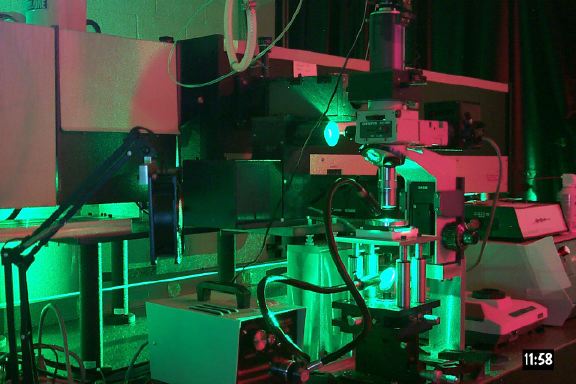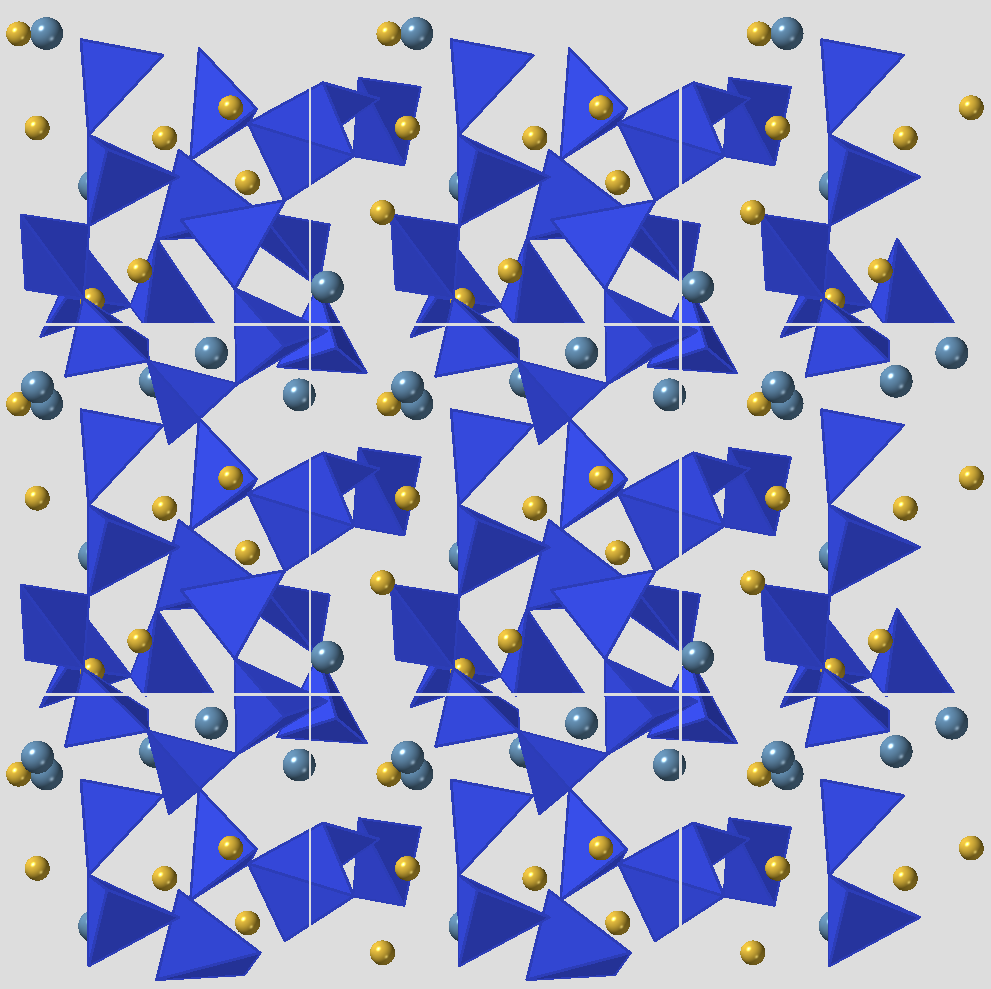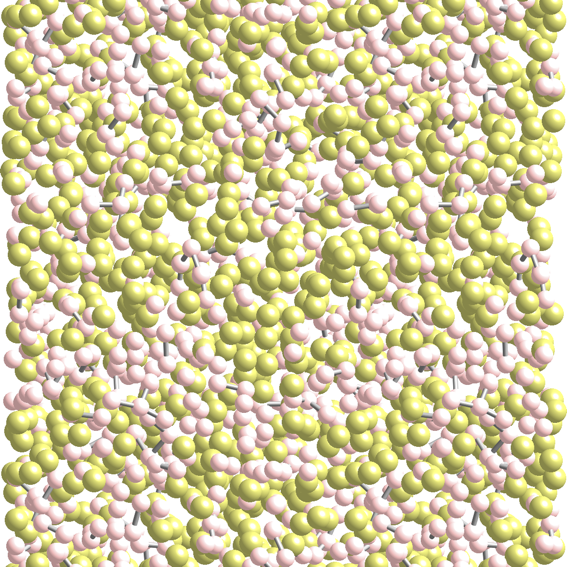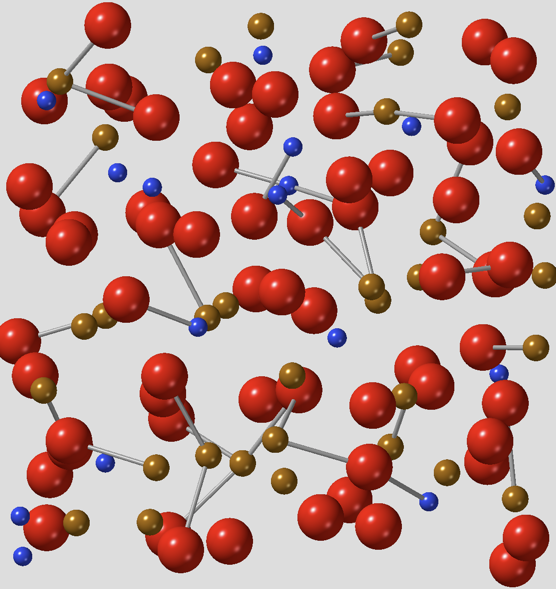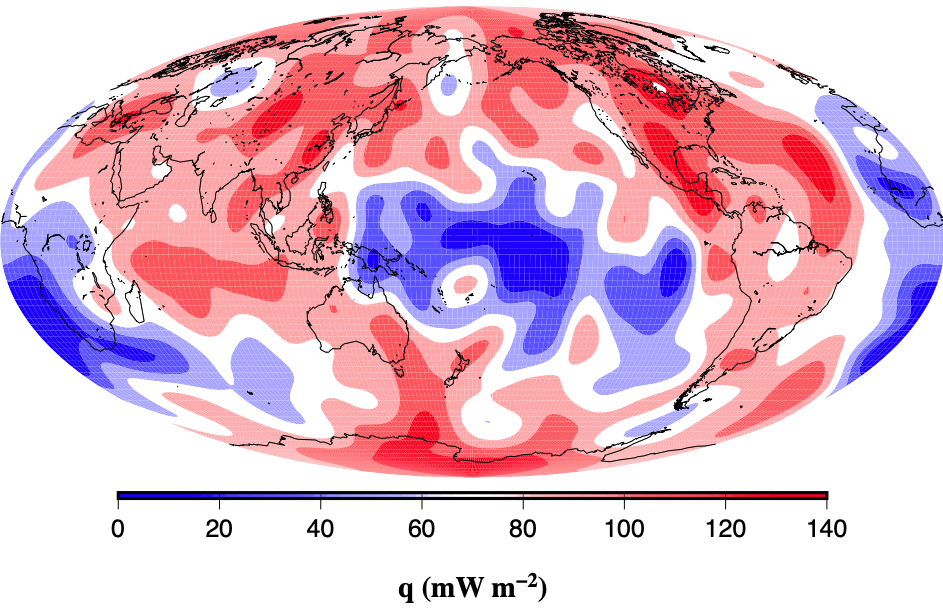
Deep Earth We study the behavior of minerals and other materials at high pressure and temperature to better understand the structure, dynamics, and evolution of the Earth’s interior. This map of predicted heat flow at the core mantle boundary is from Stackhouse et al., EPSL, 2015.
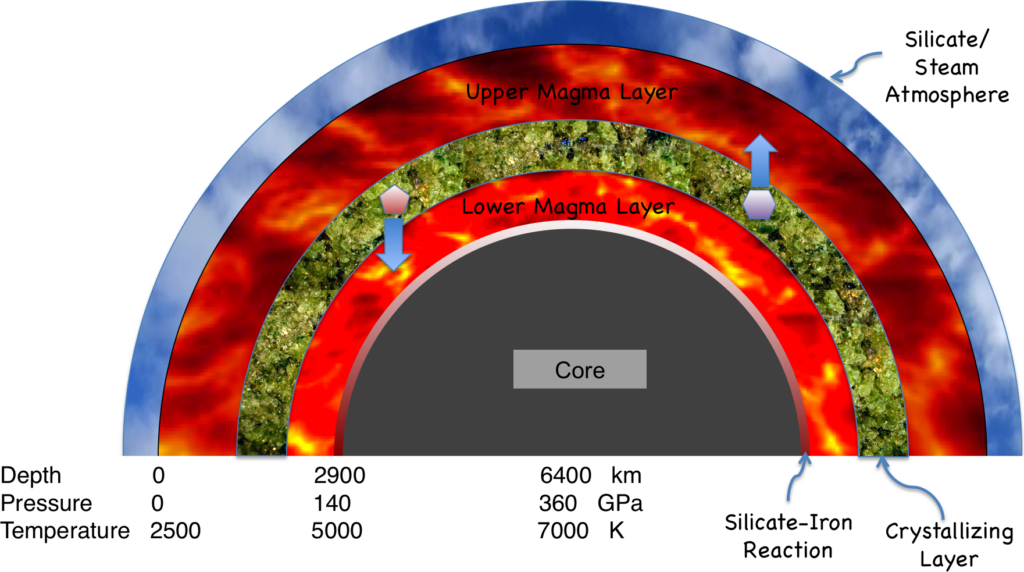
Early Earth We study the properties of a molten early Earth, try to understand how it crystallized, and what fossil signatures this initially molten state may have left behind. This cartoon summarizes many of the processes that may occur in the earliest Earth.
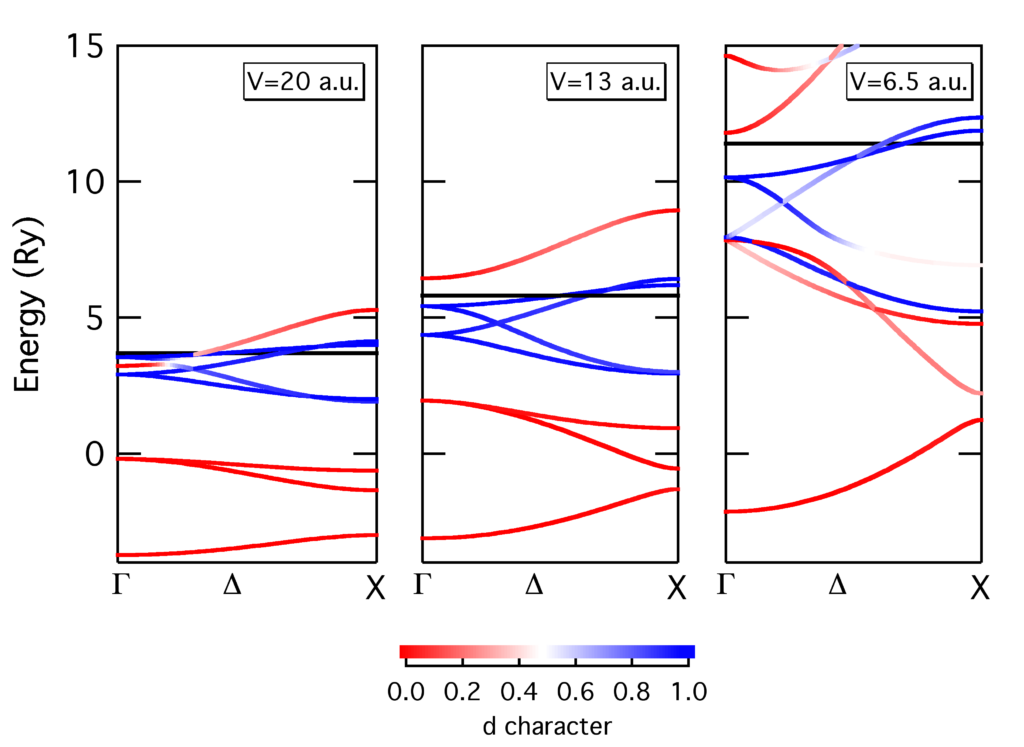
High Pressure Physics and Planetary Physics The discovery that the majority of planets are much larger than Earth challenges our understanding of the fundamental physics of materials at very high pressure and temperature, and how material properties control planetary evolution in our solar system and beyond. The figure shows how the electronic structure of iron changes up to 1 Gbar pressure (one billion atmospheres), the limit of normal (non-fusing) matter in the universe.
Methods
We use first principles quantum mechanical simulations like the one illustrated in the video to understand many processes including vaporization of the earliest Earth. The video shows silica liquid vaporizing into a vacuum. Yellow spheres are silicon atoms and red spheres are oxygen atoms. You can see oxygen molecules and SiO molecules in the vapor. Based on Xiao and Stixrude, PNAS, 2018.
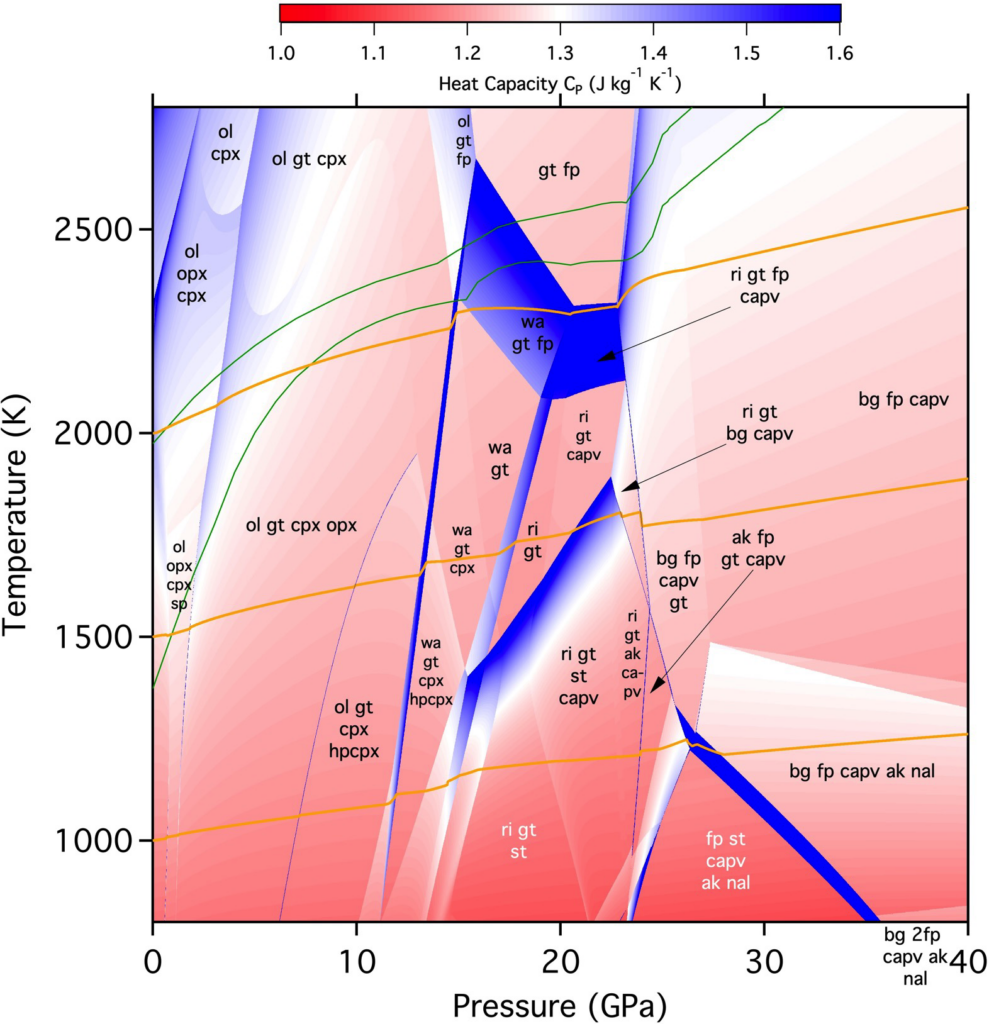
We use advanced thermodynamic modeling to study the behavior of Earth’s mantle throughout its history. The figure shows the heat capacity of Earth’s mantle over a wide range of pressure and temperature. The heat capacity, which relates the heat lost by the Earth over time to it’s interior temperature, changes rapidly where one phase transforms into another, such as wadsleyite (wa) to an assemblages of garnet (gt) and ferropericlase (fp). From Stixrude end Lithgow-Bertelloni, GJI, 2022.
Research Group





Former Group Members



